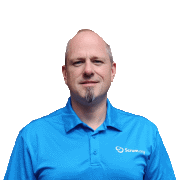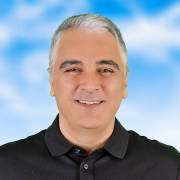Find resources
Resource search filters
Blog Post
Here are some study notes that I created whilst learning more about the Scrum.org Professional Scrum Product Backlog Management Skills (PSPBM Skills) course and assessment. These are shared as a revision resource intended to summarise the key elements.
4.8 from 5 ratings
Blog Post
In this video, Martin 🎬 takes us through the compelling journey of maximising efficiency by reducing our work-in-progress. The key? Embracing a minimalist approach that hones in on task completion rather than the proliferation of tasks 📉. It's about moving tasks through to completion, not just start...
0 from 0 ratings
Learning Series
This learning series discusses the importance of developing and delivering valuable product Increments in order to improve the outcomes that its users and customers experience. Scrum Teams deliver product Increments and measure the results to understand what customers want or need.
Module
The Sprint Review is an opportunity for everyone to inspect the progress the Scrum Team has made toward achieving the Product Goal. It is an opportunity to examine the product Increment to see if it has delivered value to customers and reduced the size of the satisfaction gap.As the Scrum Team and i...
4.7 from 6 ratings
Module
Valuable product Increments improve the outcomes that its users and customers experience. Each Sprint can be thought of as an experiment that tests a hypothesis about value, and the product Increment is the means by which a Scrum Team tests that hypothesis. Until the Scrum Team actually delivers a p...
4.6 from 5 ratings
Module
Aligning Sprint Goals with customer outcomes means stating the goal in terms of reducing a satisfaction gap, which is the difference between a customer’s current experience and their desired experience. A Scrum Team reduces a satisfaction gap by improving a specific and measurable customer outcome. ...
4.7 from 5 ratings
Module
Aligning Sprint Goals with customer outcomes helps Scrum Team to plan their Sprints. Asking questions like “what items do we need to pull from the Product Backlog to deliver the desired outcome or outcomes?”, and “what other work do we need to do to achieve our goal?” helps them to ensure that they ...
4.4 from 6 ratings
Module
During and after the Sprint, Scrum Teams need to find ways to gather feedback from actual customers. Internal stakeholders are not actual customers, and though they usually have strong affinity for customers, internal stakeholder feedback is not a substitute for actual customer feedback.The short ti...
4.1 from 6 ratings
Blog Post
If you don’t have direct authority over your Scrum Team, is it possible to lead them anyway? What does “Leadership” in the context of a Scrum Team? In this video, PST's Jason Malmstadt, Robb Pieper, and Greg Crown discuss leadership, management, and how to navigate them both as a Scrum Master.
5 from 3 ratings
Blog Post
In this video, Martin 🎥 unravels the intricate role of a Scrum Master in facilitating team dynamics and ensuring effective decision-making within the Agile framework. 🗝️📈
5 from 1 rating
Blog Post
If there is anything we would absolutely love to see more often, it would be active market and domain assessment by Product Owners. Product Owners are accountable for maximizing the value that is generated by the product the Scrum Team creates. Knowing where your product stands relative to the compe...
5 from 3 ratings
Blog Post
In diesem Artikel findest du einen Erfahrungsbericht von Simon Flossmann über:
Wie die White-Elephant-Technik die Schätzung und Priorisierung vereinfacht wird und damit das Sprint-Planning verkürzt
5 from 1 rating
Blog Post
A self-managing team is a fundamental part of effectivity. How can this happen during Sprint Planning? Check it out!
4.5 from 1 rating
Blog Post
Have you been part of an Agile or Scrum adoption that ran into challenges because some roles were not being performed effectively...? Did it cause frustration and unhealthy conflict...? Are you interested in a different way to respond to challenges with roles...? This video blog will share some idea...
0 from 0 ratings
Blog Post
In Agile practices, where adaptability and effectiveness reign supreme, two terms often pop up: Right Sizing and Same Sizing. What does “Same Sizing” even mean?
4.8 from 2 ratings
Blog Post
Self-management is crucial to the success of any Scrum Team. However, many Scrum Teams struggle with this concept and many organizations struggle with allowing self-management to flourish. So what can you do about it? In this video, PST's Jason Malmstadt, Greg Crown, and Robb Pieper share some idea...
5 from 1 rating
Blog Post
One of the elements of the Product Wall is the Roadmap. Often misused to create a yearly plan to stick to, Roadmaps are pretty different. Let's dive in!
4.6 from 17 ratings
Blog Post
In this video, Martin unravels the intricacies of shaping a Sprint backlog in Scrum. It's a journey from simplicity to complexity, aligning diverse knowledge streams into a coherent approach to Sprint planning. 🧩🚀
0 from 0 ratings
Blog Post
In diesem Artikel beschreibt Professional Scrum Trainer Simon Flossmann, wie du das Product Backlog ausmistest und die wertvollsten Aufgaben priorisierst – ohne deine Zeit in unnötigen Abstimmungen zu verschwenden.
0 from 0 ratings
Blog Post
We all make mistakes in life and there are many mistakes Scrum Masters make when new in their role. What are they and what can be done about it? PST's Jason Malmstadt, Robb Pieper, and Greg Crown have some ideas to share about common Scrum Master mistakes in this Scrum Lightning Round.
4.5 from 4 ratings
Podcast
In this recording of a live session of Ask a Professional Scrum Trainer, PST Steven Deneir based in Belgium answers questions about Scrum, the Scrum Master and the challenges people often encounter with their Scrum Teams and Stakeholders. (59:27 Minutes)
5 from 2 ratings
Blog Post
In this video, Martin takes us on a journey through the nuances of Scrum framework and the pivotal role of the Product Owner. 🗝️ He deftly explains how a well-orchestrated product backlog can steer a project to success, and why the role of the Product Owner cannot be understated. 🎯
5 from 2 ratings
Blog Post
How can someone become an excellent technology professional? Should they just focus on the technical aspect of their profession? Or should they consider other aspects? In this video blog, I offer 6 dimensions that technology professionals could consider as they travel on the path of excellence. This...
0 from 0 ratings
Blog Post
Many common problems exist with Scrum Events. They last too long, the right people don’t attend, or they just feel like a waste of time. What can we do about it? PST's Jason Malmstadt, Robb Pieper, and Greg Crown have some ideas to share on how to keep your Scrum Events valuable in today’s Scrum Lig...
0 from 0 ratings
Blog Post
Have you wondered what it takes to become an excellent technology professional? Is it the smartest developer / tester / (insert specialization here)? The one who can find the solution to the trickiest problem faster than anyone else? Or are there other factors that come into play? In this video blog...
0 from 0 ratings
Blog Post
Just because you are stuck using Jira doesn't mean you shouldn't take responsibility for using it in a professional manner. How you organize the swimlanes on your board can have a huge impact on how your team communicates and ultimately how they work together. This 1-minute YouTube short covers 3 wa...
0 from 0 ratings
Blog Post
In this video, Martin 🧭 discusses the often misunderstood concept of Sprint estimation within Scrum teams. He embarks on a journey to clarify how teams can approach this daunting task, striking a balance between prediction and adaptability. 🔄
5 from 1 rating
Blog Post
We all have a lot of meetings to attend. Some are useful and some are a complete waste of time. With that in mind, are all the Scrum Events (aka ‘Ceremonies’) mandatory? Can some of them be skipped? Professional Scrum Trainers Jason Malmstadt, Robb Pieper, and Greg Crown have some ideas to share abo...
4.8 from 2 ratings
Blog Post
Just because you are stuck using Jira doesn't mean you shouldn't take responsibility for using it in a professional manner. One way to make Jira less transparent is not updating the resolution field when items are closed. This 1-minute Youtube Short will show you how to fix that.
0 from 0 ratings
Blog Post
This article explores the art of Agile leadership, delving into the challenges of finding the right equilibrium between allowing teams to self-organize and providing enough guidance and structure for seamless Agile execution.
3 from 2 ratings
Blog Post
During the 54th Hands-on Agile meetup, David Pereira shared tried and tested Product Backlog management practices to avoid the feature factory fate.
0 from 0 ratings
Blog Post
Discipline is the prequel to success. Nothing happens without it. It has 3 parts. You need to develop your discipline with practice and set it as part of your Professional Attitude to experience a new level of being as a Scrum Practitioner.
0 from 0 ratings
Blog Post
En este artículo Guillem Hernandez Sola te cuenta cómo le hubiera gustado que alguien le hubiera dicho estas 10 verdades incómodas sobre Agile cuando empezaba su carrera.
0 from 0 ratings
Blog Post
The reality is that most developers and agile practitioners do not get much say in which tool they use to manage their Scrum artifacts. And yet, we still need them to enable our individuals to have positive interactions.
I recommend taking RESPONSIBILITY for using your tools in a professional ma...
0 from 0 ratings
Blog Post
In this vlog, PST Joshua Partogi shares 5 common myths around the product backlog that he sees quite often amongst Scrum practitioners.
4.3 from 2 ratings
Blog Post
Scrum Values make the use of Scrum successful. How can the Scrum Master use these to grow trust within the team even more? Check it out!
5 from 1 rating
Case Study
This case study highlights how a guided immersive learning experience works and how it benefits practitioners.
0 from 0 ratings
Blog Post
The term Minimum Viable Product means different things to different people. Is your company using it to define the first of a series of fixed scope, fixed date projects? If so, you're probably not using it right.
5 from 1 rating
Blog Post
🏛️ Drawing inspiration from ancient Greek wisdom, Martin embarks on a journey through the modern agile landscape, unearthing the seven cardinal sins that teams often grapple with. 🔄 From the pitfalls of envy to the dangers of wrath, join us as we delve deep into these age-old vices, now manifesting ...
0 from 0 ratings
Blog Post
In questo articolo Fabio Panzavolta condivide i 7 ostacoli a Scrum più comuni nelle aziende che ha aiutato a evolvere verso più business agility. Questo aiuterà a capire come un approccio empirico aiuta prima di tutto a rivelare i bloccaggi che devono essere rimossi per diventare più agili. Buona le...
0 from 0 ratings
Blog Post
In this video, Martin shares his insights on optimising team dynamics for smarter delivery. 🎯 He unpacks the complexities of Scrum, the role of a Product Owner, and the vital significance of effective team collaboration. 🤝 Dive into a practical discussion filled with expert guidance on navigating th...
0 from 0 ratings
Blog Post
In diesem Artikel beschreibt PST Stefan Wolpers die Auswirkungen ungeeigneter Praktiken auf die Agilität von Organisationen und was dagegen unternommen werden kann.
0 from 0 ratings
Podcast
This episode the Women in Agile Podcast unpacks the fourth commitment of the Code of Ethical Conduct for Agile Coaching; Navigating Conflicts of Interest. Join host Leslie Morse as she explores Navigating Conflicts of Interest with Natascha Speets and Femi Odelusi.About the Featured GuestsNatascha ...
0 from 0 ratings
Webcast
In this Scrum Pulse webcast, PST Lavaneesh Gautam dives deep into the intricacies of stakeholder management, providing participants with actionable insights and tools.
4.7 from 14 ratings
Blog Post
In this video, Martin discusses the profound journey of Agile transformations, pondering if we are truly ascending the slope of enlightenment or if we remain entrenched in the trough of disillusionment. 🧐📈🕳️ He eloquently dispels common misconceptions about Agile's capabilities and underlines the ne...
5 from 1 rating
Blog Post
In this video, Professional Scrum Trainers Andreanna and Scott discuss challenges we faced as a Scrum Master and how to overcome them. As a Scrum Master, you face a lot of challenges every day. From managing projects to maintaining team morale, it's important to have strategies for dealing with thes...
5 from 1 rating
Blog Post
When we uncover the truth, we arm ourselves with valuable insights, and that's truly empowering. In this article, we will dispel 3 Scrum myths.
0 from 0 ratings
Blog Post
Join Jeff and Mike as they unravel the complexities of spikes, transitioning from uncertainty to wisdom in Agile, and the essential mindset shift needed for teams to “get things done”.
0 from 0 ratings
Blog Post
Many organizations are striving to become more adaptive a means not just to survive, but to thrive. The success of an adaptive organization hinges significantly on the capabilities of its people, which often raises the question of how to select people for agile teams.
4.8 from 3 ratings
Blog Post
The emphasis in product development should not be simply on correctly following the Scrum process, but rather on delivering a finished, working software; this is the true purpose of Scrum. Scrum provides a framework with established accountabilities, events, and artifacts which all relate to creatin...
5 from 2 ratings




















